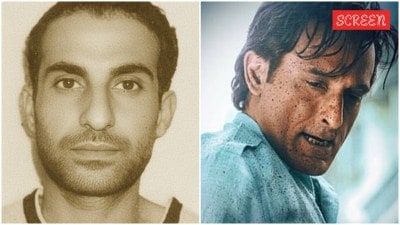Sherpa Track, Finance Track, and Engagement Groups: What are the G20 ‘workstreams’?
The G20 works in three major tracks. The Sherpa Track and Finance Track are the official tracks. The Engagement groups come under the unofficial track. Here is everything you need to know about them.
 A security personnel with a sniffer dog conducts security checks near Rajghat in preparation for the upcoming G20 Summit, in New Delhi, Monday, Sept. 4, 2023. (PTI Photo/Manvender Vashist Lav)
A security personnel with a sniffer dog conducts security checks near Rajghat in preparation for the upcoming G20 Summit, in New Delhi, Monday, Sept. 4, 2023. (PTI Photo/Manvender Vashist Lav) The 18th annual G20 Heads of State and Government Summit is less than a week away. It will take place at Bharat Mandapam, Pragati Maidan, in New Delhi on September 9 and 10.
Established in 1999, the G20, for about a decade worked, at the level of finance ministers and central bank governors only. After the financial and economic crisis of 2008, it became a leaders’ forum.
The summit is essentially the culmination of all the G20 processes and meetings held throughout the year in cities across the host country, among ministers, government officials, and civil society members and organisations. But what is its structure? What does it consist of? How do its different parts function? We explain.
How is the G20 structured?
The G20 works in three major tracks — two of them are official and one is unofficial, former Indian diplomat JS Mukul, who served as sous-sherpa for the G20 process and was involved in six G20 summits between 2008 and 2011, told The Indian Express. The official tracks are the Finance Track and the Sherpa Track. The unofficial track includes engagement groups or civil society groups.
Finance Track
The Finance Track is headed by the finance ministers and central bank governors, who usually meet four times a year, with two meetings being held on the sidelines of the World Bank and International Monetary Fund (IMF) meetings. It mainly focuses on fiscal and monetary policy issues such as the global economy, infrastructure, financial regulation, financial inclusion, international financial architecture, and international taxation.
“The Finance Track started as a grouping of finance ministers and central bank governors. After 1999, it was the most important track because there was no Sherpa track. Today, it has eight working groups,” Mukul said.
The track’s working groups are the Framework Working Group, International Financial Architecture Working Group, Infrastructure Working Group, Sustainable Finance Working Group, Global Partnership for Financial Inclusion, Joint Finance and Health Task Force, International taxation Issues, and Financial Sector Issues.
Sherpa Track
The Sherpa Track was established after the forum became a leaders’ summit in 2008. It consists of representatives of heads of state, and it focuses on socio-economic issues such as agriculture, anti-corruption, climate, digital economy, education, employment, energy, environment, health, tourism, trade, and investment.
Each representative is known as a Sherpa — it is the metaphor from the mountaineering domain, where the Sherpa is supposed to do the heavy lifting or assist the mountaineer. There are 13 working groups within the Sherpa Track.
They are: Agriculture Working Group, Anti-corruption Working Group, Culture Working Group, Development Working Group, Digital Economy Working Group, Disaster Risk Reduction Working Group, Education Working Group, Employment Working Group, Energy Transitions Working Group, Environment and Climate Sustainability Working Group, Health Working Group, Tourism Working Group, and Trade and Investment Working Group.
Engagement Groups
The unofficial track comprises engagement or civil groups. These groups often draft recommendations to the G20 Leaders that contribute to the policy-making process. The engagement groups are as follows: Business20, Civil20, Labour20, Parliament20, Science20, SAI20, Startup20, Think20, Urban20, Women20, and Youth20.
- 01
- 02
- 03
- 04
- 05






































